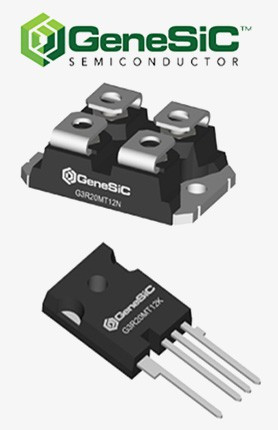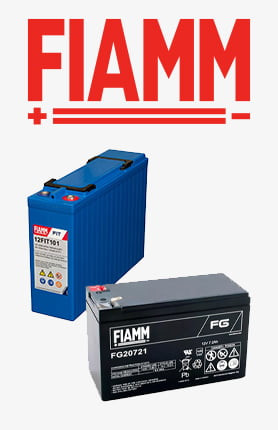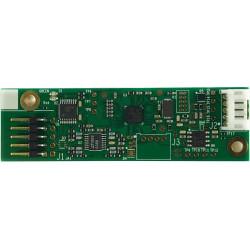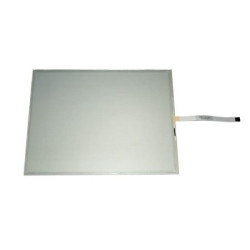-
BackX
-
Components
-
-
Category
-
Semiconductors
- Diodes
- Thyristors
-
Electro-insulated Modules
- Electro-insulated Modules | VISHAY (IR)
- Electro-insulated Modules | INFINEON (EUPEC)
- Electro-insulated Modules | Semikron
- Electro-insulated Modules | POWEREX
- Electro-insulated Modules | IXYS
- Electro-insulated Modules | POSEICO
- Electro-insulated Modules | ABB
- Electro-insulated Modules | TECHSEM
- Go to the subcategory
- Bridge Rectifiers
-
Transistors
- Transistors | GeneSiC
- SiC MOSFET Modules | Mitsubishi
- SiC MOSFET Modules | STARPOWER
- Module SiC MOSFET ABB’s
- IGBT Modules | MITSUBISHI
- Transistor Modules | MITSUBISHI
- MOSFET Modules | MITSUBISHI
- Transistor Modules | ABB
- IGBT Modules | POWEREX
- IGBT Modules | INFINEON (EUPEC)
- Silicon Carbide (SiC) semiconductor elements
- Go to the subcategory
- Gate Drivers
- Power Blocks
- Go to the subcategory
- Electrical Transducers
-
Passive components (capacitors, resistors, fuses, filters)
- Resistors
-
Fuses
- Miniature Fuses for electronic circuits - ABC & AGC Series
- Tubular Fast-acting Fuses
- Time-delay Fuse Links with GL/GG & AM characteristics
- Ultrafast Fuse Links
- Fast-acting Fuses (British & American standard)
- Fast-acting Fuses (European standard)
- Traction Fuses
- High-voltage Fuse Links
- Go to the subcategory
- Capacitors
- EMI Filters
- Supercapacitors
- Power surge protection
- Go to the subcategory
-
Relays and Contactors
- Relays and Contactors - Theory
- 3-Phase AC Semiconductor Relays
- DC Semiconductor Relays
- Controllers, Control Systems and Accessories
- Soft Starters and Reversible Relays
- Electromechanical Relays
- Contactors
- Rotary Switches
-
Single-Phase AC Semiconductor Relays
- AC ONE PHASE RELAYS 1 series| D2425 | D2450
- One phase semiconductor AC relays CWA and CWD series
- One phase semiconductor AC relays CMRA and CMRD series
- One phase semiconductor AC relays - PS series
- Double and quadruple semiconductor AC relays - D24 D, TD24 Q, H12D48 D series
- One phase semiconductor relays - gn series
- Ckr series single phase solid state relays
- One phase AC semiconductor relays for DIN bus - ERDA I ERAA series
- 150A AC single phase relays
- Rail Mountable Solid State Relays With Integrated Heat Sink - ENDA, ERDA1 / ERAA1 series
- Go to the subcategory
- Single-Phase AC Semiconductor Relays for PCBs
- Interface Relays
- Go to the subcategory
- Cores and Other Inductive Components
- Heatsinks, Varistors, Thermal Protection
- Fans
- Air Conditioning, Accessories for Electrical Cabinets, Coolers
-
Batteries, Chargers, Buffer Power Supplies and Inverters
- Batteries, Chargers - Theoretical Description
- Modular Li-ion Battery Building Blocks, Custom Batteries, BMS
- Batteries
- Battery Chargers and Accessories
- Uninterruptible Power Supply and Buffer Power Supplies
- Inverters and Photovoltaic Equipments
- Energy storage
- Fuel cells
- Lithium-ion batteries
- Go to the subcategory
-
Automatics
- Futaba Drone Parts
- Limit Switches, Microswitches
- Sensors, Transducers
-
Infrared Thermometers (Pyrometers)
- IR-TE Series - Water-proof Palm-sized Radiation Thermometer
- IR-TA Series - Handheld Type Radiation Thermometer
- IR-H Series - Handheld Type Radiation Thermometer
- IR-BA Series - High-speed Compact Radiation Thermometer
- IR-FA Series - Fiber Optic Radiation Thermometer
- IR-BZ Series - Compact Infrared Thermometers
- Go to the subcategory
- Counters, Time Relays, Panel Meters
- Industrial Protection Devices
- Light and Sound Signalling
- Thermographic Camera
- LED Displays
- Control Equipments
-
Recorders
- Hybrid Recorders - AL3000 Series | CHINO
- Graphic Recorder - KR2000 Series | CHINO
- Ubiquitous Recorders - KR5000 Series | CHINO
- Palm-sized Temperature/Humidity Meters - HN-CH Series | CHINO
- Consumables for Recorders
- 71VR1 - Compact Paperless Recorder | M-SYSTEM
- Graphic Recorder - KR3000 Series | CHINO
- PC Recorders - R1M Series | M-SYSTEM
- PC Recorders - R2M Series | M-SYSTEM
- PC Recorders - RZMS Series | M-SYSTEM
- PC Recorders - RZUS Series | M-SYSTEM
- Go to the subcategory
- Go to the subcategory
-
Cables, Litz wires, Conduits, Flexible connections
- Wires
- Litz wires
- Cables for extreme applications
- Sleevings
-
Braids
- Flat Braids
- Round Braids
- Very Flexible Flat Braids
- Very Flexible Round Braids
- Cylindrical Cooper Braids
- Cylindrical Cooper Braids and Sleevings
- Flexible Earthing Connections
- Galvanized and Stainless Steel Cylindrical Braids
- PCV Insulated Copper Braids (temp. up to 85C)
- Flat Aluminium Braids
- Junction Set - Braids and Tubes
- Go to the subcategory
- Traction Equipment
- Cable Terminals
- Flexible Insulated Busbars
- Flexible Multilayer Busbars
- Cable Duct Systems
- Hoses
- Go to the subcategory
- View all categories
-
Semiconductors
-
-
- Suppliers
-
Applications
- CNC Machine Tools
- DC and AC Drives (Inverters)
- Energetics
- Energy bank
- Equipment and Components for Hazardous Areas [Ex]
- Equipment for Distribution, Control and Telecommunications Cabinets
- HVAC Automation
- Induction Heating
- Industrial Automation
- Industrial Protective Devices
- Machines for Drying and Wood Processing
- Machines for Thermoforming Plastics
- Mining, Metallurgy and Foundry
- Motors and Transformers
- Power Supplies (UPS) and Rectifier Systems
- Printing
- Temperature Measurement and Regulation
- Test and Laboratory Measurements
- Tram and Railway Traction
- Welding Machines
-
Assembly
-
-
Inductors
-
-
Induction devices
-
-
https://www.dacpol.eu/pl/naprawy-i-modernizacje
-
-
Service
-
- Contact
- Zobacz wszystkie kategorie
Resistive touch panels: why are they the ideal solution for industry?

Touch technologies play a key role in process automation and management across various industrial sectors. Among the different types of touchscreens, resistive touch panels stand out as one of the most reliable solutions for harsh working conditions. Thanks to their durability and simplicity of operation, resistive screens have become an ideal choice for many industrial applications where durability and precision are priorities.
How do resistive touch panels work?
A resistive panel consists of two transparent layers—usually film and glass—separated by thin spacers. A conductive coating is applied to the surface of both layers. When a user touches the resistive touchscreen, the layers make contact, changing the electrical resistance, which allows for accurate determination of the touchpoint. Unlike capacitive screens, a resistive touchscreen responds to any pressure, meaning it can be operated not only with fingers but also with a stylus, gloves, or other objects.
Advantages of resistive touch panels in industry
- Durability and reliability in harsh conditions
The industry is characterized by work environments that are often unfriendly to delicate technologies. Resistive touch panels excel in places where vibrations, dust, grease, moisture, or extreme temperatures occur. Due to their resistance to these factors, resistive touch screens can operate without interference in tough conditions, making them a reliable solution.
- Precision and accuracy
Resistive touch panels provide high precision, which is especially important in industrial applications where precise control of machines or monitoring of processes is necessary. Compared to capacitive screens, a resistive touchscreen can be operated with greater accuracy, especially in cases where the user must wear protective gloves.
- Compatibility with various tools
In industrial environments, operators often use tools or must wear gloves, which makes it difficult to use touchscreens. Resistive touch panels can be operated with any objects, significantly increasing their usability in the industry. The resistive touch panel responds to pressure regardless of the material, meaning the user does not need to remove gloves to operate the devices.
- Low cost and long lifecycle
Resistive touch panels are a cheaper alternative to capacitive technology, making them a more economical solution for companies that need to implement touch interfaces in multiple locations. Additionally, their simple construction translates into longer lifespan and less risk of failure, reducing maintenance and replacement costs.
Resistance to electromagnetic interference
In industrial environments, strong electromagnetic fields often occur, which can affect the operation of some technologies. Resistive touch screens are less susceptible to electromagnetic interference, making them ideal for use in locations where machines generating strong magnetic fields are present.
Applications of resistive touch panels in industry
Resistive touch panels are used in various industrial sectors. In industrial automation, they are used to control machines, monitor production lines, and interact with supervisory systems. In the energy and transportation industries, resistive touch panels are used in control panels where working conditions are demanding, and precision and reliability are crucial.
In the medical sector, where hygiene is a priority, resistive touch screens are ideal because they can be easily disinfected and used in sterile conditions. Similarly, in the food industry, where devices must be operated in wet or greasy environments, the resistive panel is an indispensable solution.
Conclusion
Thanks to their durability, precision, and resistance to harsh conditions, resistive touch panels are the ideal solution for the industry. Whether you work in automation, energy, transportation, or medicine, resistive touch screens provide reliable performance and long lifespan. Choosing a resistive touch panel is an investment in durability, precision, and cost-effectiveness, making them one of the best solutions available in the industrial market.
Related products
Related posts
 Now available – DC/DC converters from PREMIUM
Now available – DC/DC converters from PREMIUM
 New release in DACPOL lighting for lathes – Kira covers
New release in DACPOL lighting for lathes – Kira covers






Leave a comment